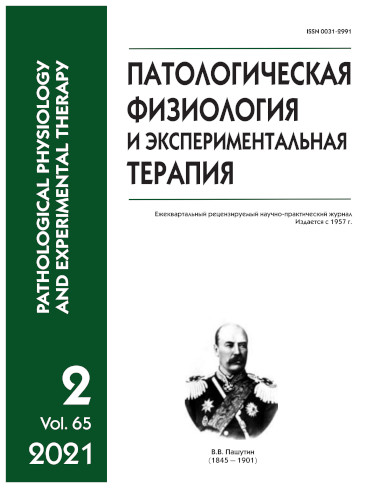A new marker of human aging: heteroplasmy level of mitochondrial genome mutations
Abstract
Introduction. Gerontology is a branch of science that focuses on the causes of biological aging. Its clinical component is geriatrics, a branch of medical science that focuses on diseases and factors causing aging. We hypothesize that mitochondrial mutations that affect genes of protein subunits of the respiratory chain, and, also, transport and ribosomal RNAs may be factors of aging. Meanwhile, according to the literature, the connection of mitochondrial genome mutations with aging has not been adequately studied. Aim. To analyze the association of heteroplasmy level in mtDNA mutations with the age of individuals. Methods. A sample of inhabitants of the Moscow region, composed of 712 study participants, was enrolled in the study. DNA was isolated from blood leukocytes by phenol chloroform extraction, and PCR of DNA fragments, containing the region of the studied mutations was performed. The obtained amplificates were pyrosequenced. These mutations were analyzed for the heteroplasmy level using a quantitative method developed by the authors. To determine the heteroplasmy level of mutations from the pyrogram data, a formula was used that had earlier been developed by the authors. The results were statistically analyzed with the software package, IBM SPSS Statistics, version 27.0 (SPSS Inc., USA). Results. Analysis of mutations showed that single nucleotide substitutions of the mitochondrial genomes m.12315G>A, m.14459G>A and m.15059G>A correlated positively with subject age (p≤0.05) whereas m.1555A>G and m.14846G>A correlated negatively (p≤0.05). Mutations m.652insG and m.13513G>A tended to correlate negatively with aging (p≤0.1). Conclusion. Three single nucleotide substitutions were found: m.14459G>A, m.15059G>A, and m.12315G>A of genes MT-ND6, MT-CYTB, and MT-TL2, respectively, that are associated with human aging. Thus, these mutations may be used for creating molecular cellular models of aging. At the same time, mutations m.1555A>G, m.652insG (gene MT-RNR1), m.14846G>A (gene CYTB), and m.13513G>A (gene MT-ND5) were detected, which correlate with aging negatively. These mutations may be used in gene therapy to slow aging.






